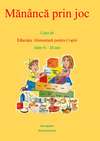Loe raamatut: «Food Counselling. How To Motivate People To Change Eating Habits»
Graziano Roberta
Food counselling
How to motivate people to change eating habits
Translated by: Codruta Tudorache
Publisher: Tektime – www.traduzionelibri.it
Introduction
Before the ’80s in Italy the health counseling was almost unknown. The very term ‘counseling’ was used only in reference to clinical counseling extensive work in very specific areas.
In the United States, Canada and England, but also in other European countries, it was instead spreading the belief that in the health sector there was a need of what they called " counseling skills ". They even began to think that having a high level of communication and interpersonal skills were a duty of every health professional.
This new approach to health care was highly critical ( "But is it really necessary that physicians, nurses or biologists,etc.,respond to these needs?” Health professionals have little time, the important thing is that they are competent on clinical and technical level, and only afterwards they are psychologists "," If the patient wants to be understood, listened, helped to cope with the situation he will see a psychologist "and so on). To answer these objections,we must ,first of all , make clear what "counseling in health care" means.
According to the World Health Organization "Counseling is a process that, through dialogue and interaction, helps people to solve their problems and make decisions; it involves a "client" and a"counselor". The first is a person who feels the need to be helped, the second is an expert, impartial, not bound to the client, trained to listen, support and guide him. "
According to the British Association for Counseling, however counseling means to facilitate the client's endeavour in a manner that respects the values, personal resources and self-determination. " In general, then, we can say that counseling is a process that relates a professional (the counselor) to another person (the client) who feels the need to be supported in the management of a problem or a decision . It is a relationship of help which aims at helping people to make decisions in order to improve their situation. It is therefore about analyzing together with the people concerned, their current lifestyle, possible changes,
the difficulties to implement these changes and the most effective way to address them. It is understood as: "use of skilled and structured relationship that develops self-awareness, emotional acceptance, growth and personal resources.
The counseling can be directed to defining and solving specific problems, in decision-making, to face times of crisis, to confront their own feelings and their inner conflicts and to improve relations with others The role of the counselor is to help the client work in a manner that respects the values, personal resources and self-determination. "
In general, then, we can say that counseling is a process that relates a professional (the counselor) to another person (the customer) who feels the need to be supported in the management of a problem or a decision . It is a relationship of help that aims to support people in making the best decisions to improve their situation. It implies, therefore, analyzing together with the people their current lifestyle, possible changes, difficulties to implement these changes and the most effective way to address them.
The task of the "counselor" should never be to provide pre-packaged solutions to the consulted ones but to help them explore the possible chosen solutions. The counselor does not offer recommendations, does not indicate solutions,even less psychotherapeutic paths to follow: his task is to support the person who asks for help in finding possible ways of changing what has become now a tiring situation and a source of discomfort. The objective of the intervention is to enable the customer's path of change towards the goals that he sees possible and achievable. Therefore it is defined as a professional intervention, based on communication and relating skills, which deals with a request from a single person, a couple, a family or a group of people to be assisted in solving a problem, in undertaking a change and finding simple and easily workable solutions.
Why do diets fail?
Among the main risk factors for obesity and non-communicable chronic diseases (diabetes, hypertension, dyslipidemia, ischemic heart disease, heart failure, etc.)there are definitely the bad eating habits and a wrong lifestyle, such as having a sedentary life. The limited effectiveness of prevention programs and treatment of overweight and sedentary lifestyle highlights and is due to the fact that we have to face the problem of obesity in its multifactorial aspect that is taking into account the behavioral, relational, motivational, psychosocial and environmental factors that lead to obesity, not seeing it anymore as a single disease. Epidemiological studies show that despite changing their eating habits as an integral part of many metabolic diseases, many people are missing the knowledge of the rules of proper nutrition and a healthy lifestyle. But what is most alarming, however, is that many people lack the awareness of being overweight or sedentary.
But the same studies, however, show that often neither the knowledge of the proper nutrition rules nor the simple prescriptions of diets or regular exercise programs are enough to adopt and maintain a healthy and active lifestyle ,or reduce excess weight and prevent chronic diseases associated with an unhealthy diet and physical inactivity. It is known that the prescriptive approach of a rigid diet has limited long-term effects, because patients tend to abandon the diet over time. All this occurs although in the recent years to the traditional diet have been added new methods that make the diet easier and accessible and therefore of more compliance, such as giving an idea of the recommended servings at a glance without using the grams. This choice is based on the evidence emerged from some studies, which indicate that the use of visual patterns in addition to the verbal explanations facilitates compliance with the therapeutic diet indications.
But why diets fail? The report Obesity Day 2004 resulted from more than 6000 questionnaires i showed that 66% of respondents kept a diet at least once in their lives and 55% of these have recovered all the lost weight over the years, and 32% of them recovered it partly. Even in childhood compliance to the diet appears to be rather problematic. A multicentered study conducted in Italy on about 1383 children of 10 years old , followed by 11 pediatric surgeons for overweight showed already after the first visit a drop out of 32% even rising to 64% if we only considered the obese excluding the overweight ones. Two years dropouts accounted for 92%. The patients that took part in the study were asked the reason of the failure of diet and motivations reports are illustrated in the graph of the Picture1.
Limits have emerged due to the same diet, such as having to eat different foods than the other family members, having to weigh the raw foods, before cooking, the less tasty dishes, but you can also notice a percentage of "other", big enough, where probably the sphere of food consumption crosses that of the emotions. Among the factors that most frequently hinder the success of a diet, we also have:
The socio-economic level: there is a relationship between the unhealthy diet and a low level of education; on the other hand just look at the number of the immigrants come to Italy and become obese because they change lifestyle than the source country, improve the economic situation and the availability of high density energy foods;
Incorrect information on nutrition and prejudices, not only those coming from sources such as television, family members, friends ( "My friend has lost weight when she stopped eating bread and pasta"), the Internet, but also superficial information or incomplete by other health professionals. misinformation induce often not feasible expectations;
environmental and family situations: having little time for lunch, taking turns, coming back late from school, having to prepare for many people, having many social occasions
Emotional factors and states of mood: as you know they are of primary importance, bearing in mind that, however, they concern the persons in their most inner sphere and sometimes they are so decisive that it requires the support of other professionals, able to work in a team with those present in the nutrition surgery.
For this reason, the techniques used to help improve eating habits should be focused on patients’ empowerment,to whom are provided tools to make responsible choices about food. These approaches include interventions such as motivational interviewing, use of nutritional counseling and cognitive-behavioral techniques in addition to educational actions aimed to improve knowledge about the composition of foods, their functions, utilization and association. Supported actions should go beyond the simple information, education, promotion and prescriptive approach. But the person must be at the center of the action, with its needs and its demands, must consciously choose their own way of life must be motivated to change in both the initial choice is in the later stages of the route. An approach that includes intervention on motivation for change seems to be most appropriate to achieve changes in individual lifestyles and to maintain health behaviors over time.
Tasuta katkend on lõppenud.



















